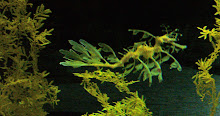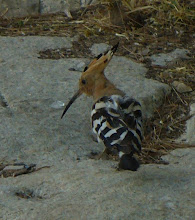Hi. Welcome to Weirdbeautiful.As it says in the title banner, this blog is about the Weird and wonderful natural world (but particularly wildlife). Weirdbeautiful is a mixture of nature photos and short and longer articles on nature, interviews and links to content elsewhere on the web. There are quite a few things scattered about Weirdbeautiful now, so please have a look around. If you scroll down, you can find a blog archive with a list of everything near the bottom of the page on the right hand side; alternatively, there’s a summary below-
Updates. I update this blog with the regular content every Monday and Thursday, so if you
bookmark Weirdbeautiful in your browser, those are the best days to visit. I post other content- articles, interviews, images and links- at random times.
If you have an RSS reader on your mobile/blackberry or computer,
this blog has RSS feed enabled, so you can get updates directly.
Regular Features. The regular features here are a weekly “cheering-up bird” –a new one is posted first thing every Monday morning- and a quote of the week- posted on Thursday. The people quoted range from Aristotle and Martin Luther to Isaac Asimov and Albert Einstein, but are usually famous scientists. It always surprises me how seldom you see scientists quoted in the main media (compared with- say- actors or writers).
Articles and Longer Content. If you are interested in longer articles/ longer content, there are several- for example “Diary of a nomadic naturalist”- the October entry is here-
http://victorianeblik.blogspot.com/2009/10/diary-of-nomadic-naturalist-october.htmlThis is actually one of a series of diary-articles, but I haven’t had time to upload the others yet. I have some articles summarising scientific research on this blog, too (this one is on butterfly colouration)-
http://victorianeblik.blogspot.com/2009/09/flashing-butterflies-science-in-plain.htmland an interview with particle physicist Dr Jeanne Wilson here-
http://victorianeblik.blogspot.com/2009/09/ask-particle-physicist-with-dr-jeanne.html. Some of my written articles are available elsewhere, but, for various contractual reasons, I can’t reproduce them on this blog. One of these is a diary piece I wrote called “A week in the life of a wildlife writer” (the wildlife writer in this case being me): it is available here-
http://scienceray.com/philosophy-of-science/a-week-in-the-life-of-a-wildlife-writerThere are also some articles I did available free online at e-zine articles- if these interest you, a list of them can be found on this blog here-
http://victorianeblik.blogspot.com/2009/10/articles-online.html-they include an interview with butterfly expert Zsolt Balint and articles on chimpanzee research, pandas, bees, bacteria and the Edelweiss-
. You can find a list of articles I have written that are available free online on the articles page of my main website-
http://www.victorianeblik.com/page2.htm -you may have to scroll down to find them.
Links. From time to time I post links on this blog to what I think is “the best of the web”- striking wildlife or nature photos, pet care articles and science news stories- for example
these articles-
http://victorianeblik.blogspot.com/2009/11/some-recommended-articles-pet-care.html and links to images by Daniel Seidman, Eduardo Izquerido and Victor Eredel , amongst others- if you have a look around this blog, you can find these and other links. (The link to Daniel Seidman's image is just below this post, I posted the link for Victor Eredel's Autumn photographs back in August).
 The Book and The Magazine
The Book and The MagazineI am currently working on a book of this blog “Weirdbeautiful”, which will be a coffee-table-type book with a mixture of glossy wildlife photos, short articles and interviews. I have spent a lot of time over the past few months interviewing people who work with wildlife in various ways- all sorts of people from scientists to insect collectors, falconers and snake breeders –and the best of these interviews will be in the book, too. You can read some of these interviews in “Practical Reptile Keeping”, each month*, some will be posted on this blog and the others will only be available in the book.
. The images in the book will be a selection of the best plant and animal photographs I have taken over the past decade, whilst working as a research scientist and more recently. I am currently choosing what to include from my images of flora and fauna from Korea, Japan, Australia, the USA, Cuba, Israel, Italy, Belgium, Portugal, Hungary, Spain, Britain and many other places. There will also be some unique and previously unseen photographs taken with an electron microscope. As for the interviews, some of this pictures have been posted on this blog but others will only be available in the book. I am sorry if this sounds hard-sell, but, as you can see, I am very excited about this book. I will be putting some more information about it online closer to publication, but you can sign up for advance notice by e mailing neblik@yahoo.co.uk with “Weirdbeautiful book mailing list” in the title.
(*If you live in the UK, you can get Practical Reptile Keeping from WH Smiths/ JS Sainsbury and various high-street newsagents.)
Thanks for reading.















